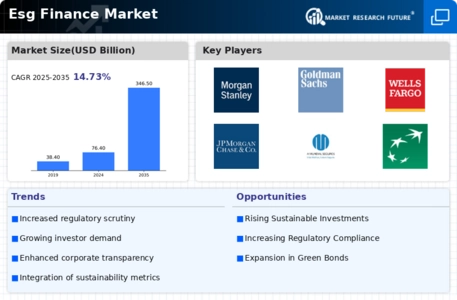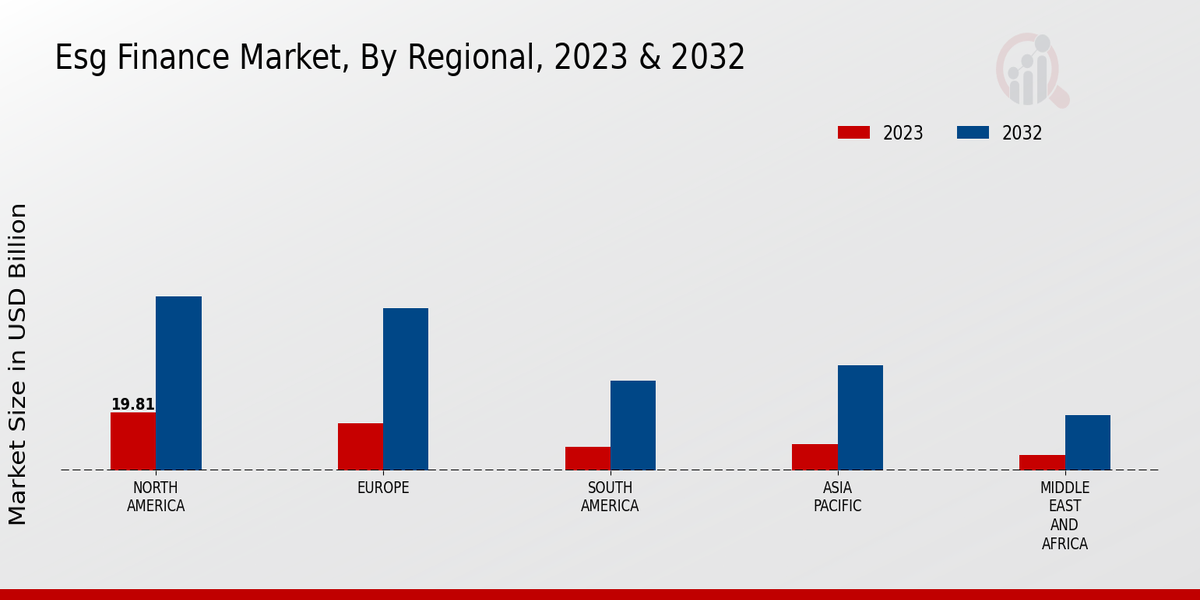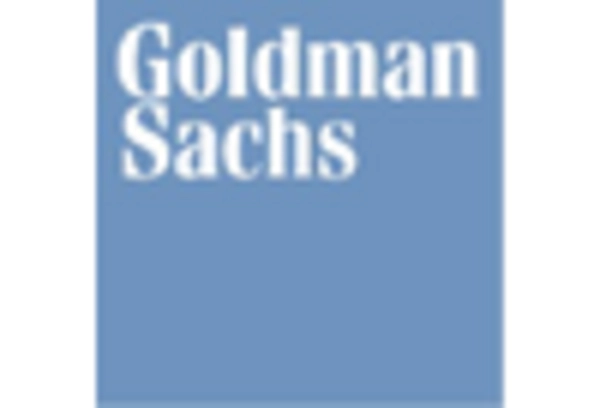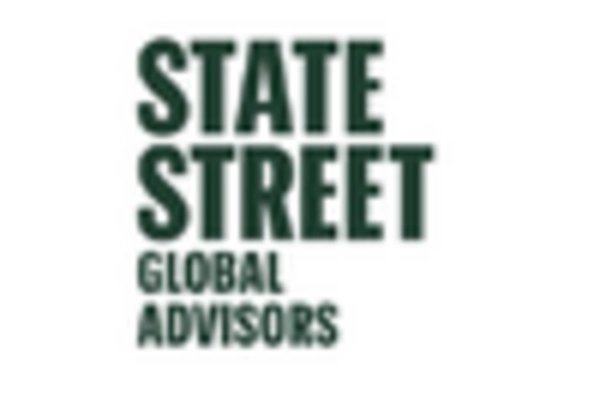Increased Regulatory Pressure on Corporations
Increased regulatory pressure on corporations regarding ESG disclosures is a significant driver of the ESG Finance Market. Governments and regulatory bodies are implementing stricter guidelines to ensure that companies report their ESG practices transparently. By 2025, it is anticipated that over 50 countries will have enacted legislation mandating ESG disclosures, reflecting a global trend towards accountability. This regulatory environment compels companies to adopt sustainable practices, thereby influencing investor sentiment and capital allocation. As firms strive to comply with these regulations, they may enhance their ESG performance, which could lead to improved financial outcomes. Consequently, the ESG Finance Market is likely to expand as investors seek to align their portfolios with companies that demonstrate compliance and commitment to sustainability.
Integration of ESG Metrics in Financial Analysis
The integration of Environmental, Social, and Governance (ESG) metrics into financial analysis appears to be a pivotal driver for the ESG Finance Market. Investors increasingly demand transparency regarding the sustainability practices of companies. In 2025, approximately 80 percent of institutional investors are likely to incorporate ESG factors into their investment decisions. This shift indicates a growing recognition that ESG performance can correlate with financial performance, thereby influencing investment strategies. As a result, financial analysts are adapting their methodologies to include ESG metrics, which may enhance the credibility and attractiveness of investment products. This trend not only reflects a change in investor preferences but also suggests a broader acceptance of sustainable finance principles within traditional financial frameworks.
Technological Advancements in ESG Data Analytics
Technological advancements in data analytics are transforming the ESG Finance Market. The proliferation of big data and artificial intelligence enables investors to assess ESG performance with unprecedented accuracy. In 2025, it is estimated that the market for ESG data analytics tools could reach USD 5 billion, driven by the need for real-time insights into corporate sustainability practices. These tools allow for the aggregation and analysis of vast amounts of data, facilitating informed decision-making. Furthermore, enhanced data transparency and accessibility may empower investors to hold companies accountable for their ESG commitments. As technology continues to evolve, it is likely that the ESG Finance Market will witness increased innovation, leading to more sophisticated investment strategies that prioritize sustainability.
Growing Demand for Green Bonds and Sustainable Financing
The growing demand for green bonds and sustainable financing is reshaping the ESG Finance Market. In 2025, the issuance of green bonds is projected to exceed USD 1 trillion, driven by investors' increasing preference for environmentally friendly projects. This trend indicates a shift in capital allocation towards initiatives that address climate change and promote sustainability. As more corporations and governments issue green bonds, the market is likely to attract a diverse range of investors, including institutional and retail investors. This influx of capital may facilitate the financing of renewable energy projects, sustainable infrastructure, and other initiatives that align with ESG principles. The rise of green bonds not only reflects changing investor preferences but also underscores the potential for sustainable finance to drive economic growth.
Shift in Consumer Preferences Towards Sustainable Brands
The shift in consumer preferences towards sustainable brands is a crucial driver of the ESG Finance Market. As consumers become more environmentally and socially conscious, they increasingly favor companies that demonstrate a commitment to sustainability. In 2025, it is estimated that 70 percent of consumers will be willing to pay a premium for products from sustainable brands. This consumer behavior influences corporate strategies, prompting companies to adopt ESG practices to meet market demand. As a result, businesses that prioritize sustainability may experience enhanced brand loyalty and market share. This trend not only impacts corporate profitability but also drives investment in the ESG Finance Market, as investors seek to capitalize on companies that align with evolving consumer values.


















Leave a Comment